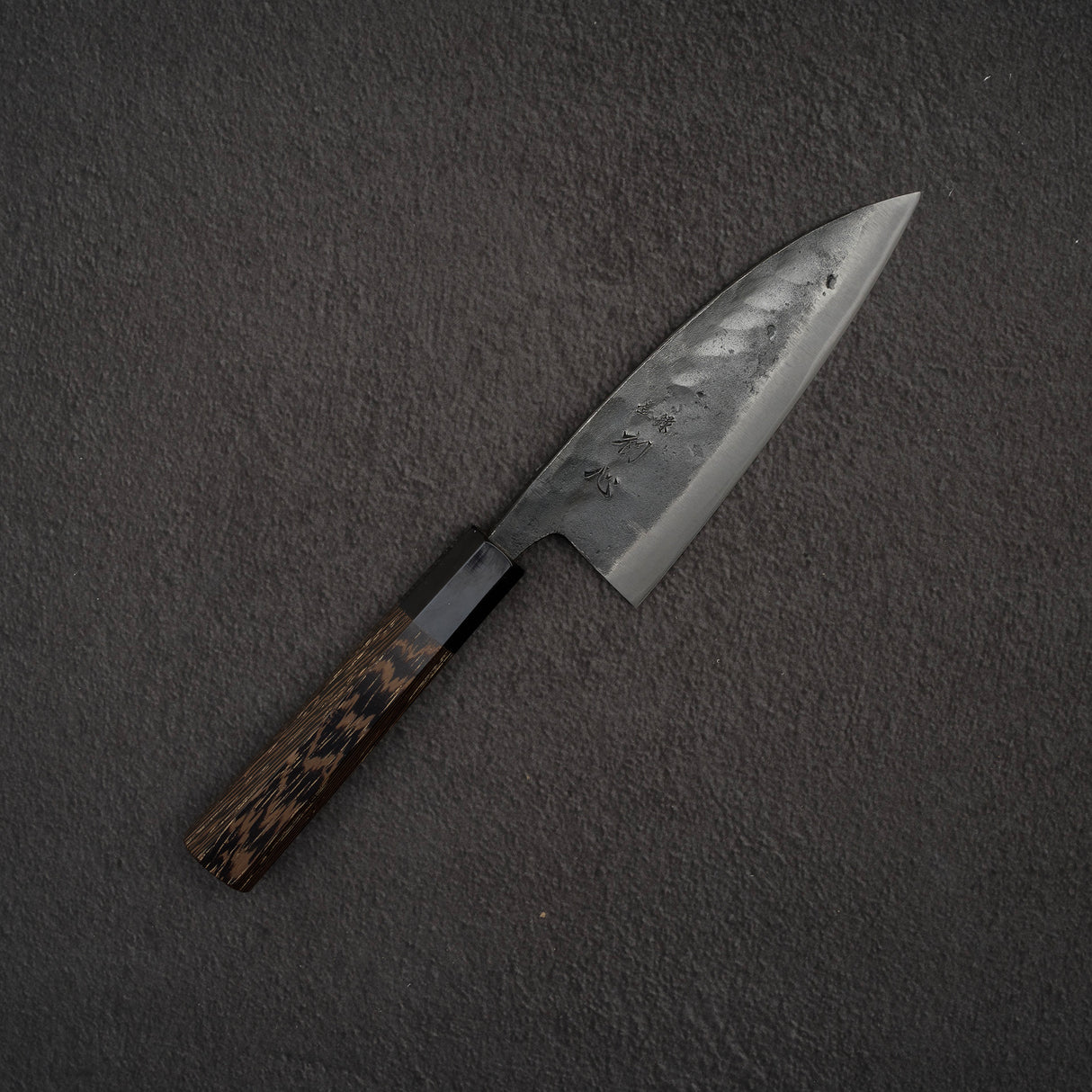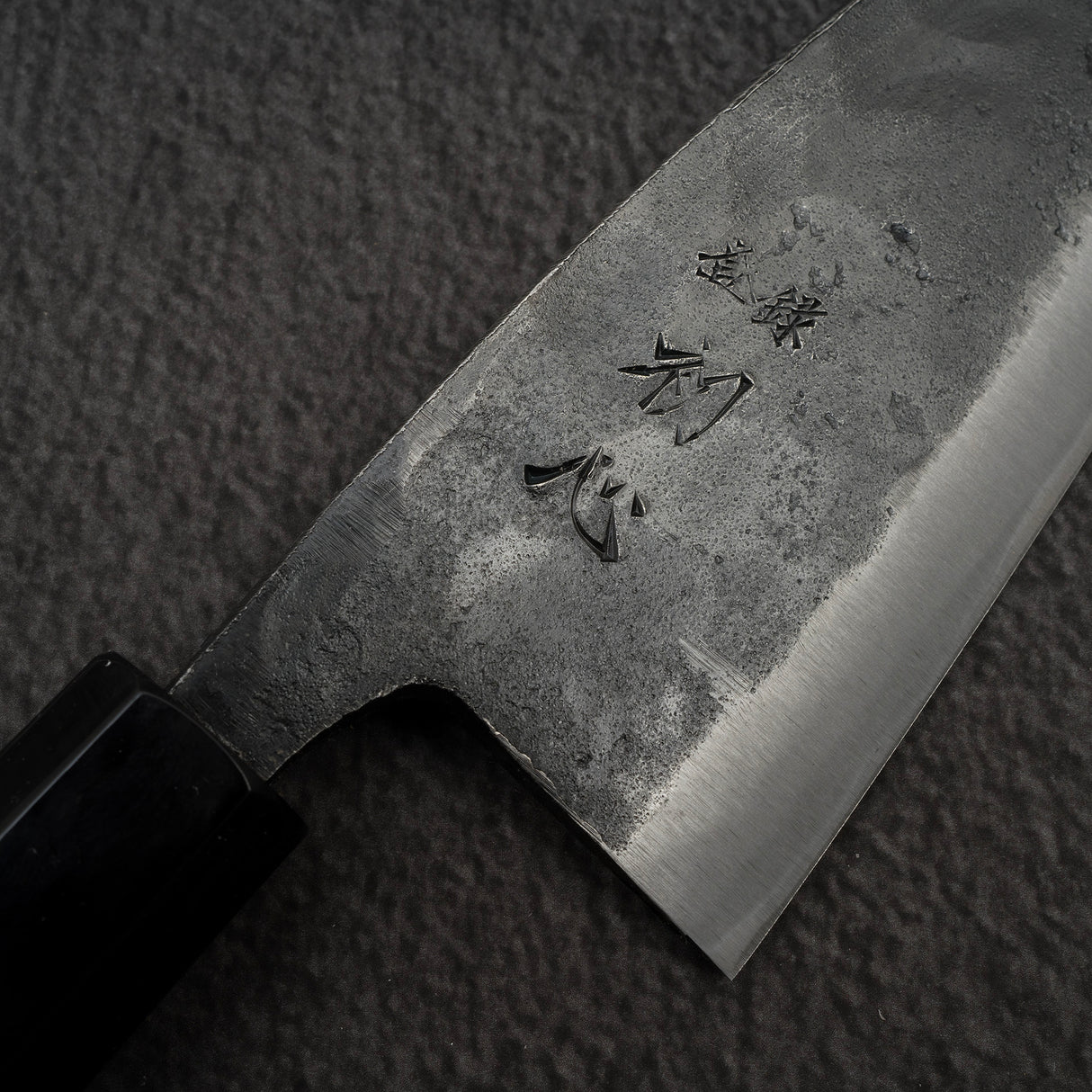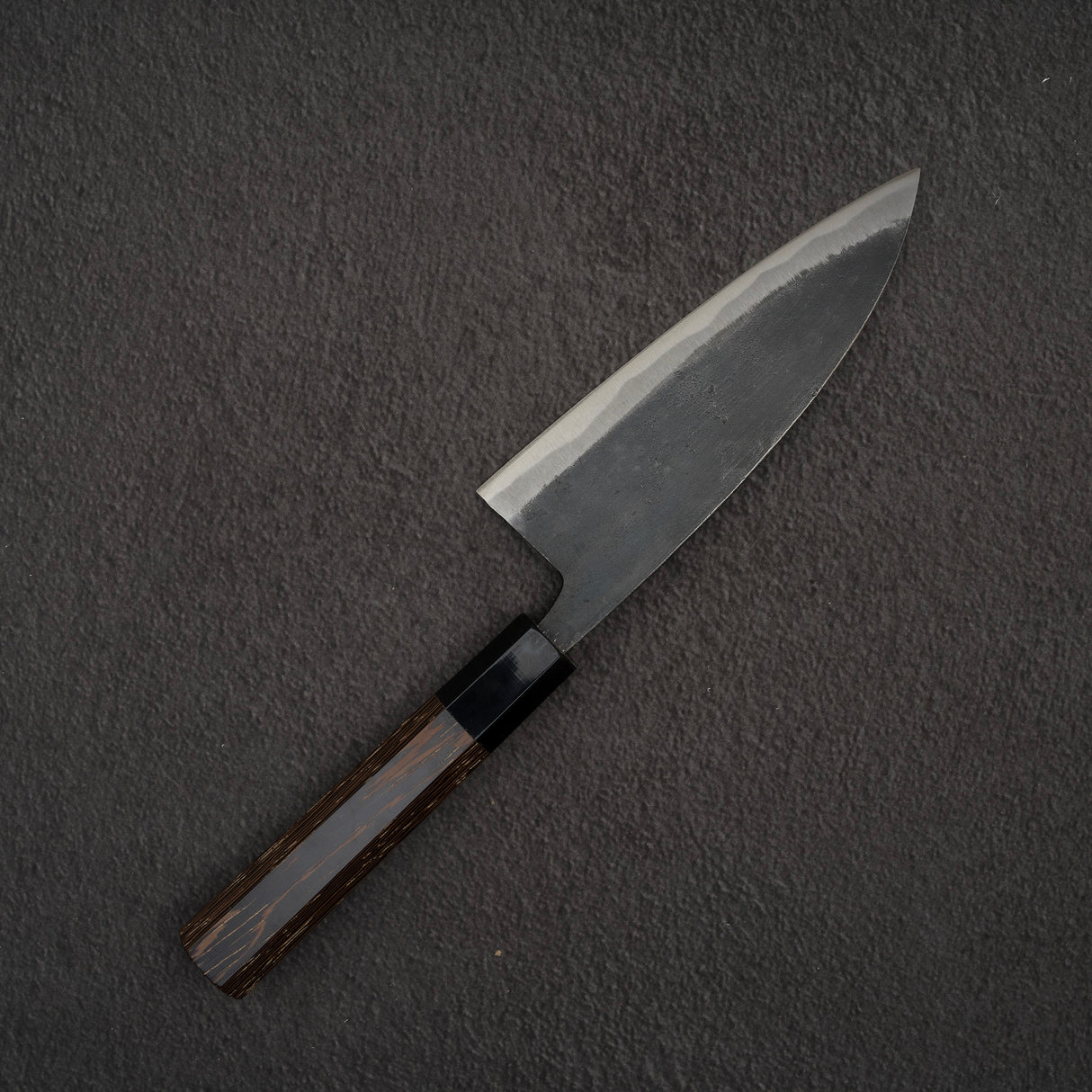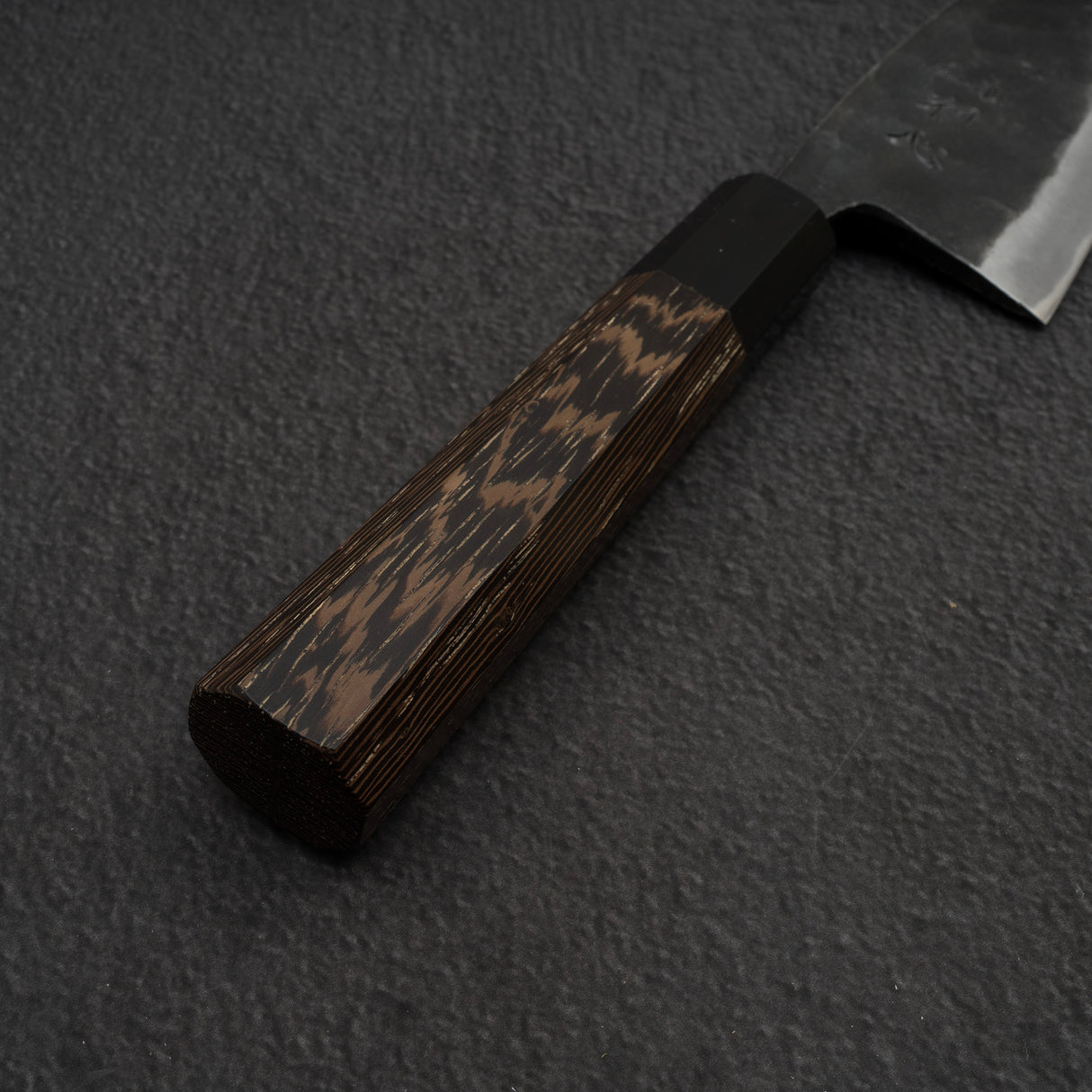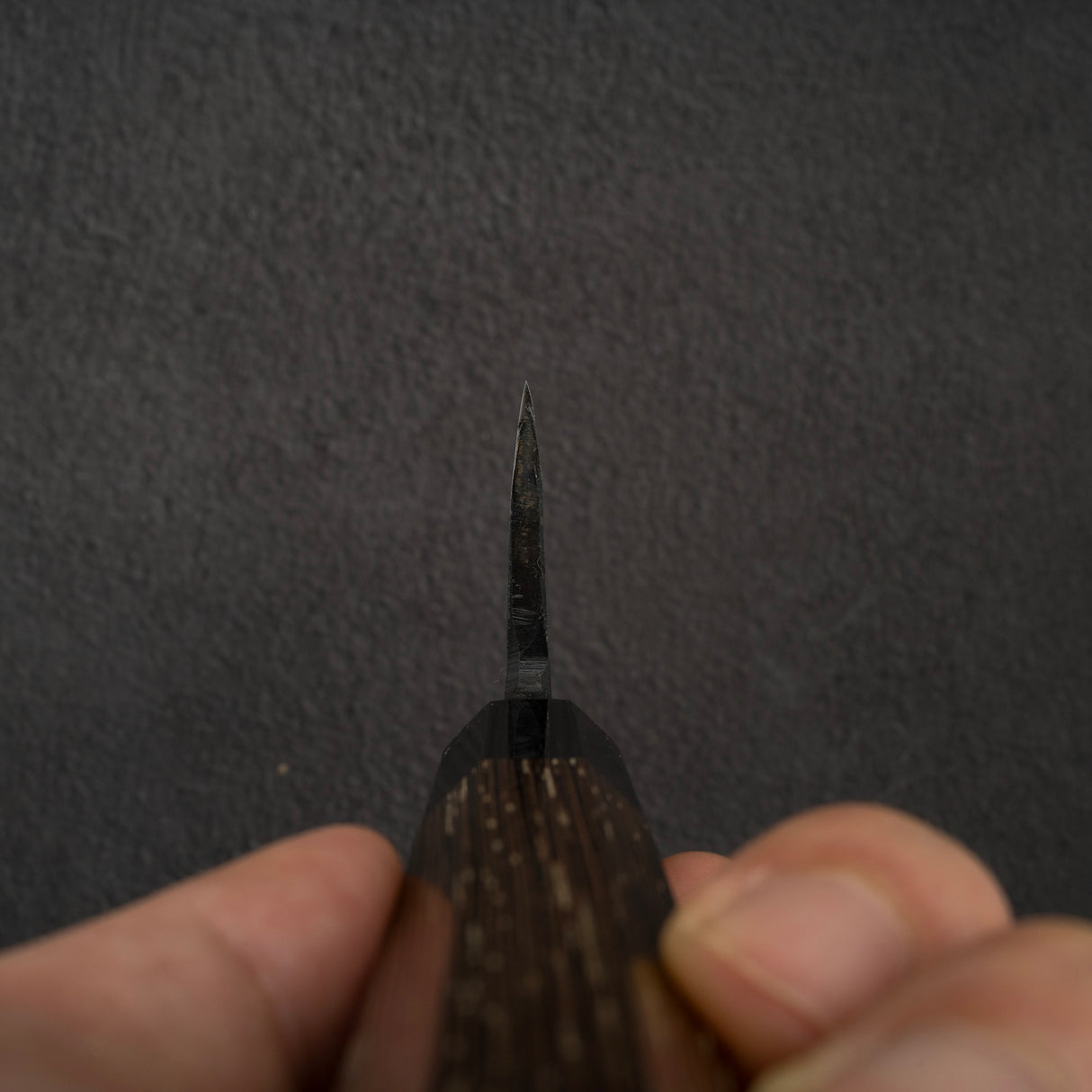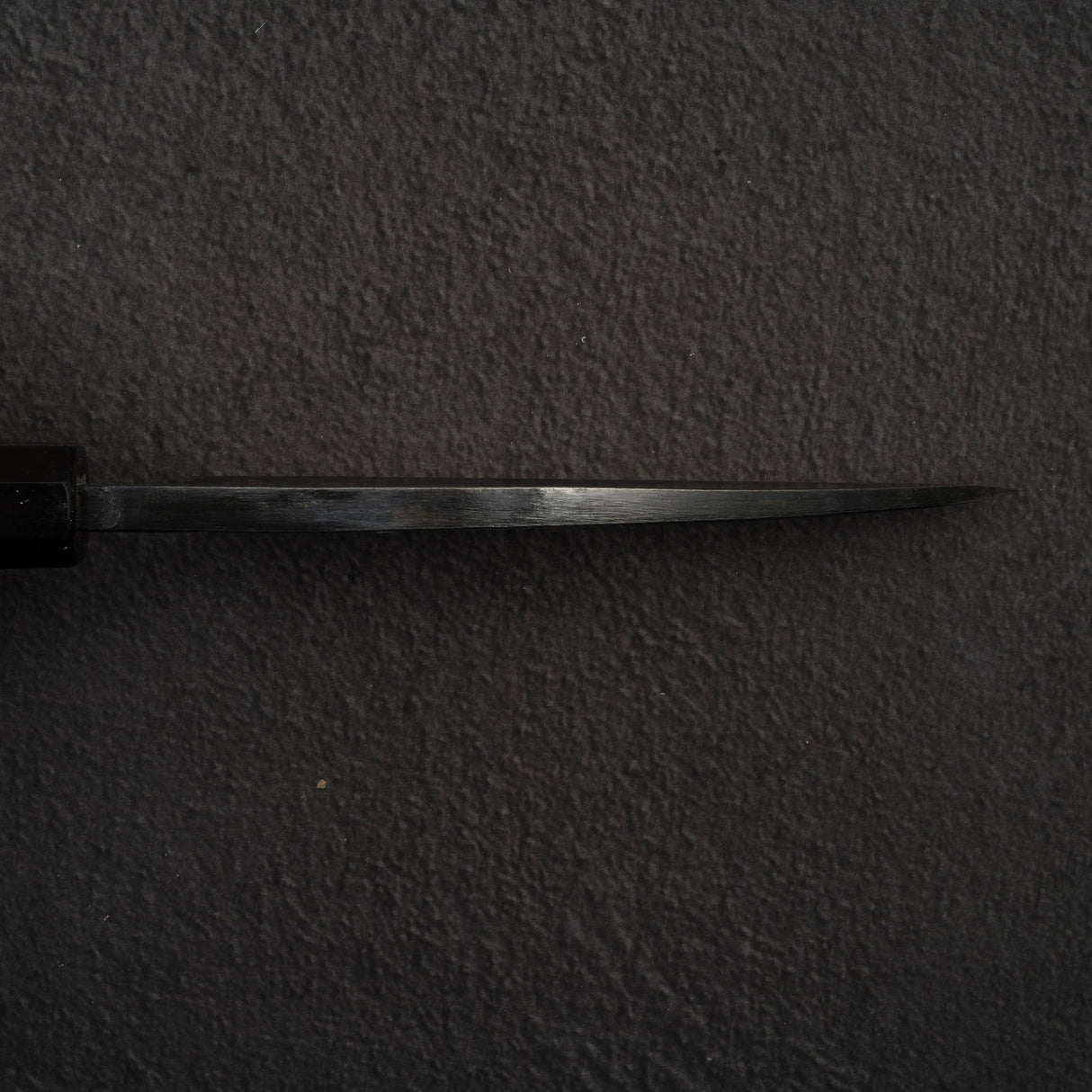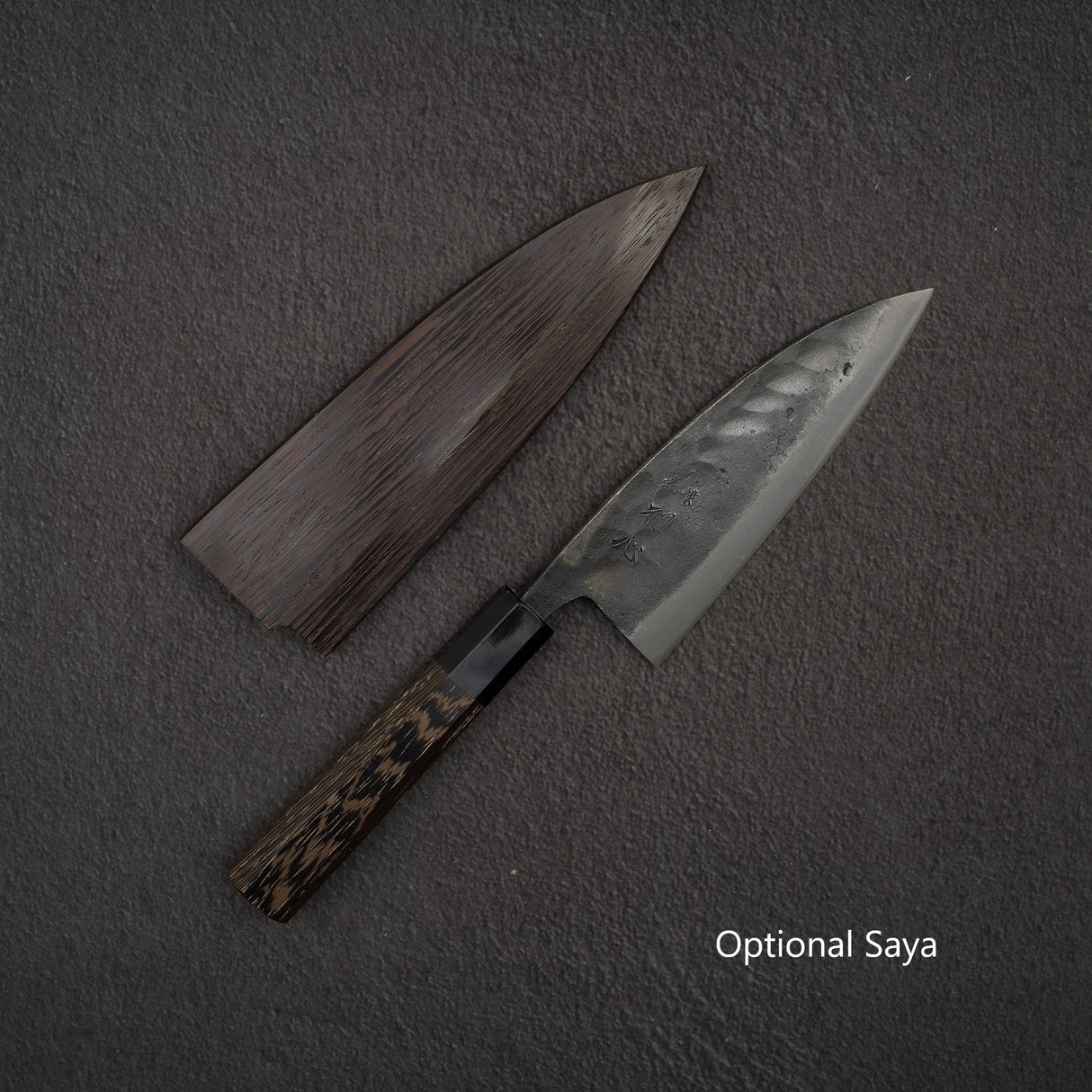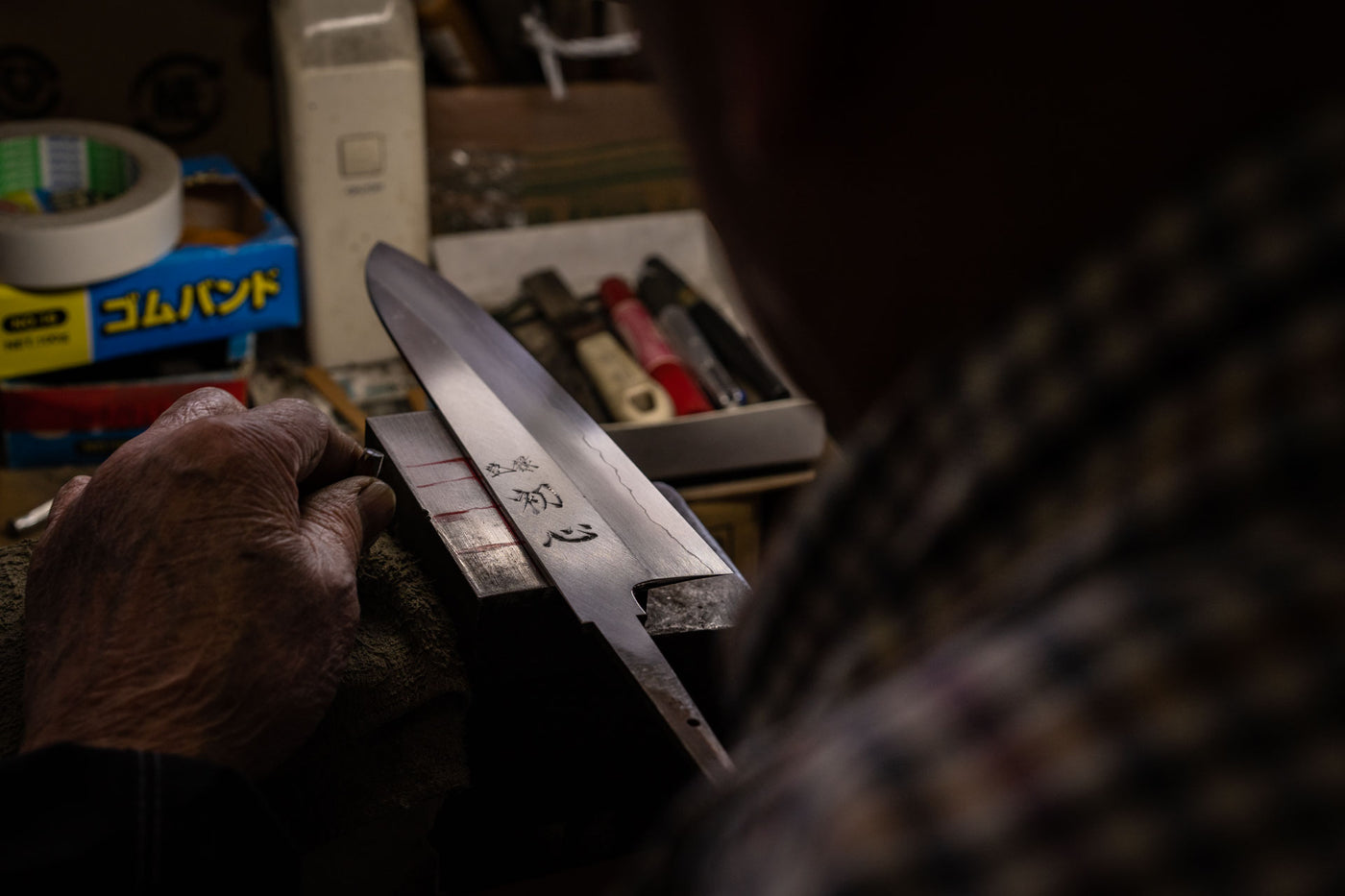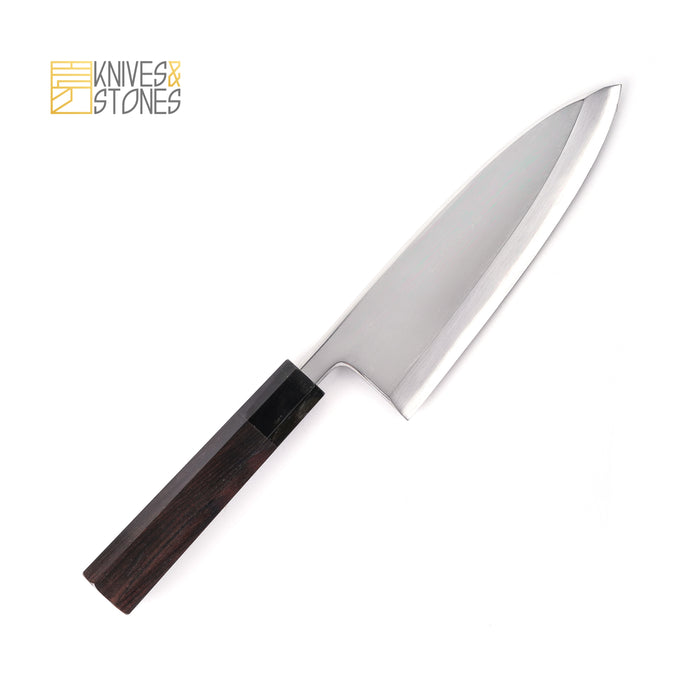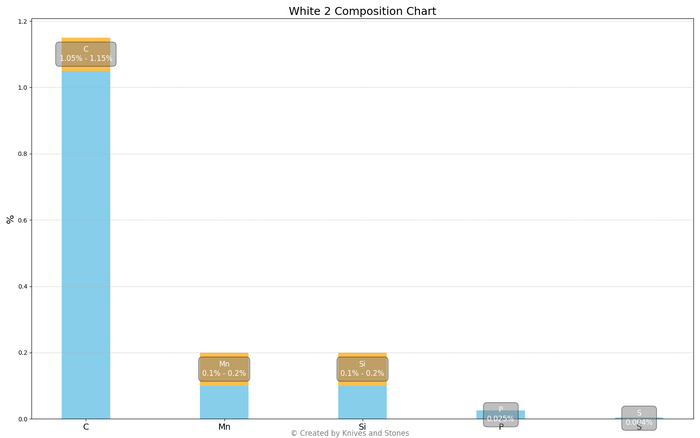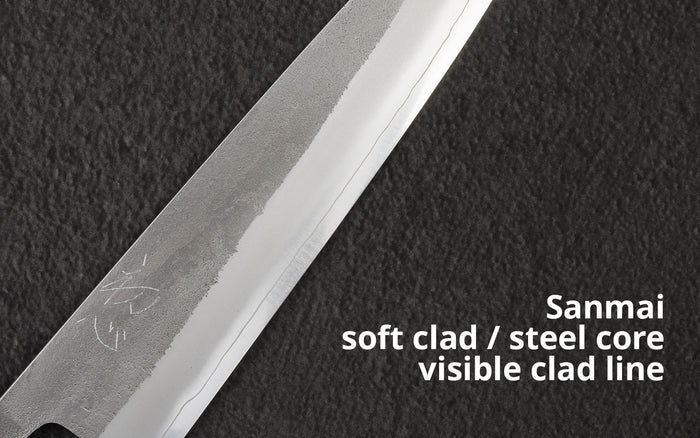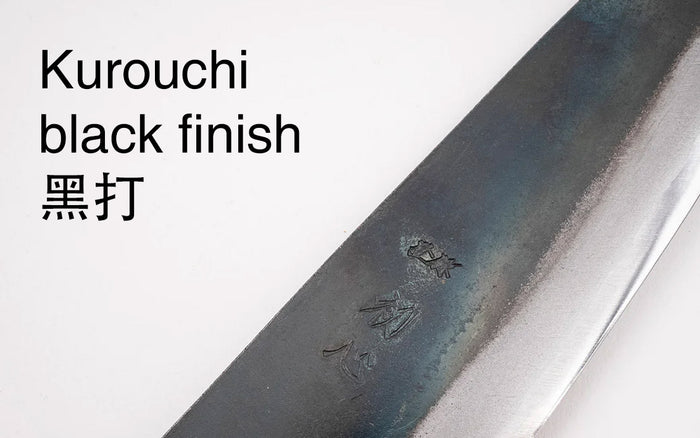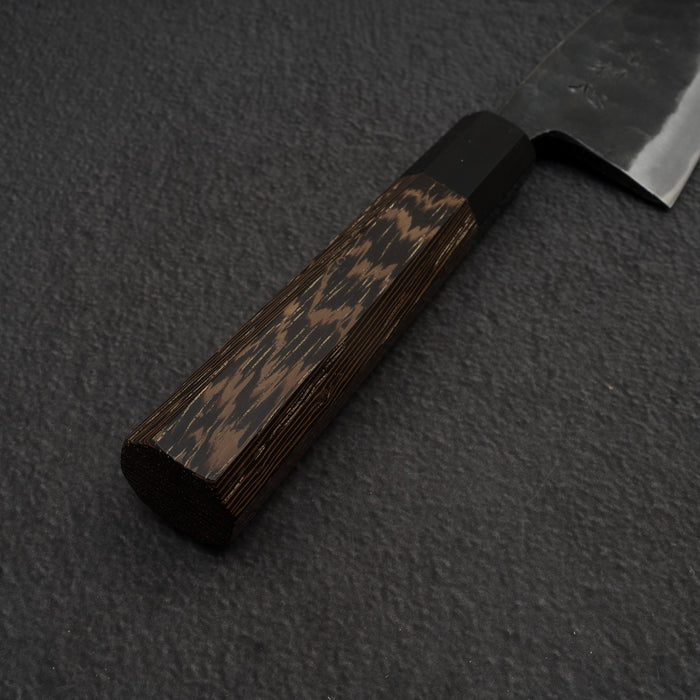Hatsukokoro | SKU:
HATS_KRKZ_W2_DE150
Hatsukokoro Kurokaze White 2 Kurouchi Deba 150mm Double Bevel
$169.95
Unit price
/
Unavailable
Hatsukokoro Kurokaze White 2 Kurouchi Deba 150mm Double Bevel is backordered and will ship as soon as it is back in stock.
Pickup available at 2 Bishop St
Usually ready in 24 hours
Detailed Specifications
| Line | Hatsukokoro Kurokaze White 2 Kurouchi |
| Profile | Deba |
| Bevel Type | Double Bevel |
| Weight | 269 g 9.49 oz |
| Edge Length | 156 mm .6.14 inch |
| Heel Height | 52 mm .2.05 inch |
| Width @ Spine | 7.4 mm 0.29 inch |
| Width @ Mid | 6.3 mm 0.25 inch |
| Width @ 1cm from Tip | 2.8 mm 0.11 inch |
| Steel | White 2 / Shirogami #2 | Carbon |
| Blade Construction | Sanmai - Stainless Clad |
| Hardness (HRC) | 60 - 64 |
| Surface Finish | Kurouchi |
| Handle | Octagonal Wenge Handle Black Ferrule |
| Region | Hyogo |
| Best for |
|

| Pros | Cons |
|
|
|
Care Instruction
- Don't cut hard things! Japanese knives are brittle so bone hacking is a NO NO!
- Wash with neutral detergent after use, and wipe dry;
- Please don't wash knife with dishwasher, it will damage the wood handle;
- Be careful not to leave the knife close to a heat source for a long time;
- It is a lot more dangerous to cut with a blunt knife than a sharp knife!
- It is best to sharpen a Japanese knife regularly on a waterstone.
- Oil the (carbon) knife if storing for an extended period of time to prevent rust.

